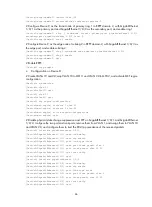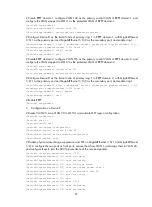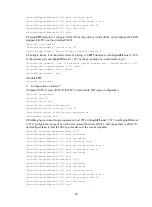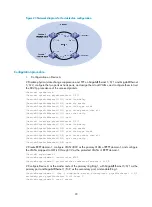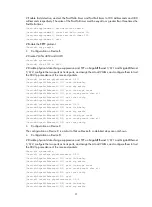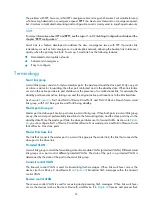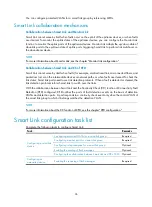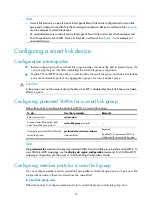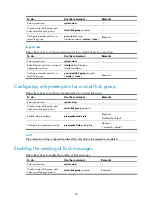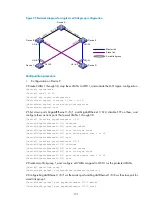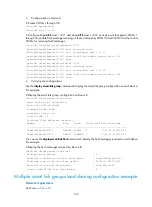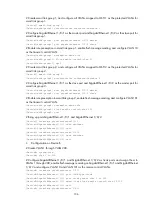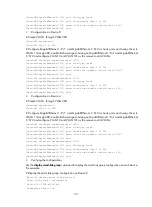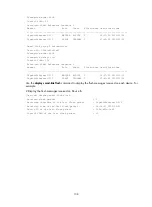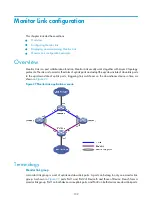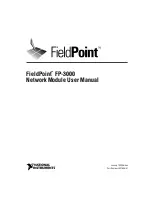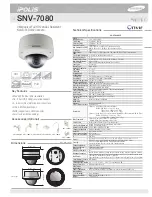
94
The problem with STP, however, is that STP convergence time is long, which makes it not suitable for users
who have high demand on convergence speed. RRPP can meet users’ demand on convergence speed,
but it involves complicated networking and configurations and is mainly used in ring-shaped networks.
NOTE:
For more information about STP and RRPP, see the
Layer 2—LAN Switching Configuration Guide and the
chapter “RRPP configuration.”
Smart Link is a feature developed to address the slow convergence issue with STP. It provides link
redundancy as well as fast convergence in a dual uplink network, allowing the backup link to take over
quickly when the primary link fails. To sum up, Smart Link has the following features:
•
Dedicated to dual uplink networks
•
Subsecond convergence
•
Easy to configure
Terminology
Smart link group
A smart link group consists of only two member ports: the master port and the slave port. Only one port
at a time is active for forwarding; the other port is blocked and in the standby state. When link failure
occurs on the active port due to port shutdown or the presence of a unidirectional link, for example, the
standby port becomes active, taking over and the original active port transitions to the blocked state.
As shown in
, Port1 and Port2 of Device C and Port1 and Port2 of Device D each form a smart
link group, with Port1 being active and Port2 being standby.
Master port/slave port
Master port and slave port are two port roles in a smart link group. When both ports in a smart link group
are up, the master port preferentially transitions to the forwarding state, and the slave port stays in the
standby state. Once the master port fails, the slave port takes over to forward traffic. As shown in
, you can configure Port1 of Device C and that of Device D as master ports, and Port2 of Device C and
that of Device D as slave ports.
Master link/slave link
The link that connects the master port in a smart link group is the master link; the link that connects the
slave port is the slave link.
Protected VLAN
A smart link group controls the forwarding state of some data VLANs (protected VLANs). Different smart
link groups on a port control different protected VLANs. The state of the port in a protected VLAN is
determined by the state of the port in the smart link group.
Transmit control VLAN
The transmit control VLAN is used for transmitting flush messages. When link switchover occurs, the
devices (such as Device C and Device D in
) broadcast flush messages within the transmit
control VLAN.
Receive control VLAN
The receive control VLAN is used for receiving and processing flush messages. When link switchover
occurs, the devices (such as Device A, Device B, and Device E in
) receive and process flush







